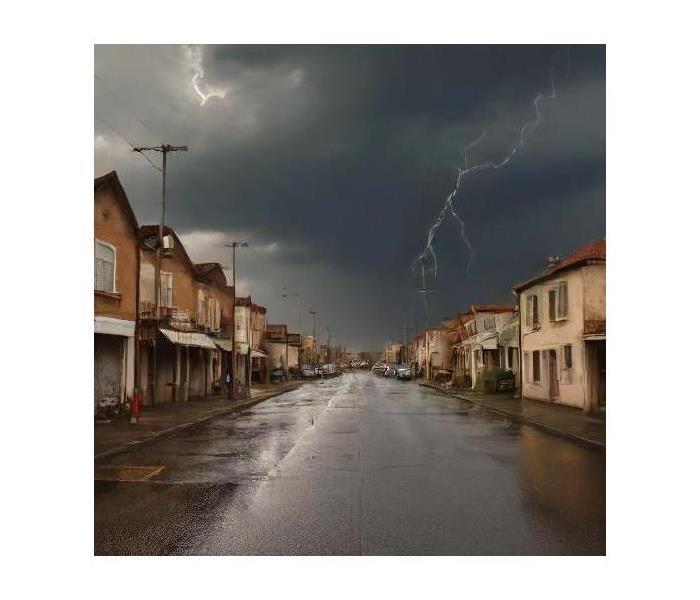How to Prepare for and Recover from a Severe Storm
8/20/2024 (Permalink)
Severe storms can be both frightening and destructive, causing widespread damage and disruption. Whether you’re facing a hurricane, tornado, or severe thunderstorm, knowing how to prepare and respond can make a significant difference. Here’s a comprehensive guide on how to prepare for and recover from a severe storm, helping you stay safe and minimize damage.
Preparing for a Severe Storm
Emergency Kit: Assemble an emergency kit with essential supplies, including non-perishable food, water, medications, a flashlight, batteries, a first aid kit, and important documents. This kit should last at least 72 hours to cover the period when utilities and services might be disrupted.
Home Inspection: Ensure your home is storm-ready by checking for and reinforcing potential vulnerabilities. Secure windows and doors with storm shutters or plywood, and clear gutters and downspouts to prevent water damage.
Communication Plan: Establish a family communication plan, including emergency contact information and meeting points. Ensure all family members know what to do in case of evacuation and how to stay informed through weather alerts and news updates.
Insurance Review: Review your homeowner’s insurance policy to ensure you have adequate coverage for storm damage. Understand the terms of your policy, including coverage limits and deductibles, and make any necessary adjustments.
During the Storm
Seek Shelter: During severe storms, seek shelter in a safe location away from windows and exterior walls. For tornadoes, go to a basement or an interior room on the lowest floor. For hurricanes or severe thunderstorms, stay indoors and avoid using electrical appliances.
Stay Informed: Keep track of weather updates through a battery-powered radio or a weather app. Follow local authorities’ instructions and be prepared to adjust your plans based on the latest information. The Weather Channel offers real-time updates and alerts.
Avoid Flooded Areas: If you encounter floodwaters, avoid driving or walking through them. Just six inches of moving water can knock you off your feet, and it’s impossible to gauge the depth and speed of floodwaters accurately. For flood safety tips, visit the Centers for Disease Control and Prevention (CDC).
Recovering from a Severe Storm
Safety First: Once the storm has passed, ensure it’s safe to leave your shelter. Avoid downed power lines, and check for structural damage before re-entering your home. Use a flashlight rather than candles to avoid fire hazards.
Document Damage: Take photos and videos of any damage to your property for insurance purposes. This documentation will be crucial for filing a claim and assessing the extent of the damage.
Clean Up: Begin clean-up efforts once it’s safe. Remove debris and contaminated items to prevent mold growth and further damage. Use a dehumidifier to dry out affected areas and consider hiring professional restoration services like SERVPRO of Carroll County.
Seek Assistance: If needed, contact local disaster relief organizations or government agencies for assistance. They can provide resources and support for those affected by severe storms, including temporary housing, financial aid, and emergency services.
Being well-prepared and informed can make a significant difference when dealing with severe storms. By following these steps, you can protect yourself, your family, and your property, ensuring a more manageable recovery process after the storm has passed.





 24/7 Emergency Service
24/7 Emergency Service
